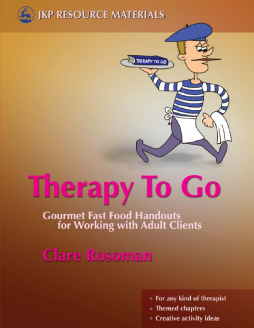
Additional Information
Book Details
Abstract
This convenient collection of handouts provides a wide range of ready-made activities for all kinds of therapists working on a professional level with adult clients.
The activities within this book are suitable for any therapist, whether trained as a counsellor, psychologist, social worker, family therapist, psychiatrist or psychotherapist. The handouts provide creative approaches to a variety of presenting problems, including anxiety, anger, depression and low self-esteem. Fully photocopiable, the tools can be used to complement or expand upon a client's treatment plan by selecting the activities that will help them best to meet their therapeutic goals.
This practical set of therapy tools will be invaluable in saving time for the busy therapist working with adults. There is also a companion volume, Therapy To Go: Gourmet Fast Food Handouts for Working with Child, Adolescent and Family Clients.
The book provides creative ways to explore a wide-range of general therapeutic issues and specific problems... The best feature of this book is that it contains such a vast range of photocopiable resources in a single place. The topics covered are so wide-ranging that it would take a busy therapist a considerable time to develop a similar set of resources of their own.
Behavioural & Cognitive Psychotherapy
Clare Rosoman is a clinical psychologist currently managing a large not-for-profit psychology clinic in Queensland, Australia. She is also a consultant at Griffith University as a supervisor of post-graduate clinical psychology students in their work with clients. Dr Rosoman has previously worked in a variety of settings including psychiatric hospitals, private practice, schools and universities, and has published several papers in the area of children's social functioning and antisocial behaviour.
Table of Contents
| Section Title | Page | Action | Price |
|---|---|---|---|
| Part 1. Introduction | |||
| Chapter 1. Why transdisciplinary urban knowledge co-production? | |||
| Chapter 2. Methods for what? The strengths and limitations of transdisciplinary knowledge co-production | |||
| Part 2. Methods for transdisciplinary urban knowledge co-production | |||
| Chapter 3. Creating co-productive spaces | |||
| Chapter 4. Designing processes to integrate knowledge | |||
| Chapter 5. Blurring boundaries to facilitate understanding | |||
| Part 3. Conclusions | |||
| Chapter 6. Concluding reflections and recommendations |
